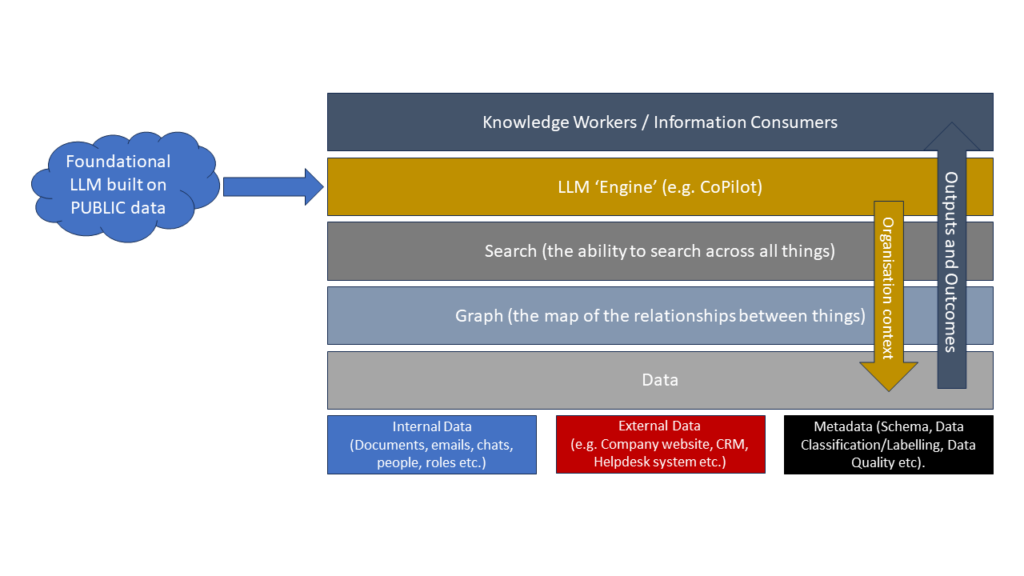
Through the Keyhole – Strategic Data Leadership in a time of crisis

Too many strategy leaders in today’s organisations are viewing their organisations through a keyhole. This means they are ill-equipped to respond to crises. It means they are ill-prepared to take advantage of unforeseen events. That keyhole is the understanding of data and information processes and flows within the organisation. The shape of this keyhole is influenced by a variety of factors. The academic background of the leader influences it. Their experience in the day-to-day operations of the organisation shapes it. The boundary is framed by the inevitable aggregation of reporting and summation of activities in the management reports that are presented for review at steering committees and board meetings.
As W.Edwards Deming said, those who manage by easy numbers soon have no business, and no numbers.
However, this is not the fault of organisation leaders. There has been a significant evolution in how information is captured, processed, manipulated and moved in the last thirty years. The information value chain in organisations, and between organisations, has become several orders of magnitude more complex. But the competence and capability of management to effectively embrace and understand this hasn’t always kept up.
The Drumbeat of Progress(?)
Twenty-five years ago, my undergraduate degree was teaching basic Microsoft Word and Excel as a module. Twenty years ago, my bosses were agog at receiving automated drilldown reports daily on call centre operations in a web browser. A year or two later, I was having to explain to a senior stakeholder in the phone company that if he wanted to report on data captured by his teams in the CRM system, he needed to actually pay for the database changes needed to make that piece of magic happen. Today, organisations are looking to roll out self-service business intelligence and analytics functions. They are betting the farm on Machine Learning and AI within their organisations. But the data underneath remains mushy, messy, and untamed.
Everywhere we look we see ‘anecdata’ presented in various visual forms. All too often, however, the pretty visual masks or distorts the underlying data in some way. Sometimes it is by accident (such as the misuse of the much maligned pie chart). But other times it could be intentional. Journalists and other stakeholders often make requests for information to organisations, particular Public Sector, for statistical or other information. The reason: we are capturing, gathering, and recording more data and stakeholders often have an expectation that the information will be easy to find, retrieve, or collate.
After all, to those looking through the keyhole, it’s just data isn’t it? A simple matter of programming things. The stakeholder sees data through the keyhole of an internet search engine. The complexity of their request is not seen.
Further challenges come from the increasing complexity of the legal, regulatory, social, and ethical aspects of information management.
Become Acquainted with Every Art/ Know the Ways of All Professions
How do data leaders master data strategy and navigate a path that allows them to capitalise on opportunities in information? How do they ensure the capacity to respond to crises in a sustainable and effective manner? Over on TDAN.com this month I’ve started a series of articles about the application of Miyamoto Musashi’s 16th Century writings on Strategy, The Book of Five Rings. In this book, Musashi describes the underlying tenets of his “Way of Strategy”.
Among the fundamentals of this ‘way’ is the need to become acquainted with every art and to know the ways of all professions. Musashi doesn’t require masters of strategy to be expert in every martial art or excel at a profession like bricklaying. Masters of strategy should be familiar with those arts and disciplines so they can understand how to correctly deploy troops in battle, read an opponent’s intent in one-on-one combat, or understand the challenges of building fortifications.
This is essential if data leaders are to ‘widen the keyhole’ to see the broader expanse of the room beyond in organisations. Proper mitigation of information-related risk requires an understanding of how to implement effective data governance. Don’t understand the mechanics of reporting processes? Then you will inevitably ask for the undoable or unknowable. Can’t appreciate the context of data? Ensuring regulatory obligations in relation to data will be a challenge. Likewise, preventing outcomes from the use or misuse of data which would be unethical or harmful becomes harder.
Through the Keyhole
Of course, the keyhole goes both ways. It is not just business-side leaders who need to become acquainted with every art. Technology-side leaders too need to appreciate the business arts that their technology innovations support and enable. This is why the technology and tools focused definitions of ‘data literacy’ being promoted by tool vendors and advisory consultancies such as Gartner are wrong. These definitions focus on expanding the business-side leader’s view of the room on the other side of the keyhole through developing the ability to use technology tools.
Musashi calls this out in his treatise on strategy:
It is difficult to realise the true Way just through sword-fencing
I’d put it a bit more bluntly: This definition of data literacy is to data what knowing how to hold a biro and ‘mark your X’ is to traditional literacy.
Context is King
Musashi’s ask of leaders in the Way of Strategy is sufficient understanding that they can act appropriately in context. This requires a contextual literacy on the part of data leaders. But that contextual literacy will give them a glimpse of more of the room on the other side of the keyhole.
In work I’m doing with John Ladley, Doug Laney, and others as part of the Leaders’ Data Group, I’ve proposed the following working definition for Data Literacy. This is based on work that the Castlebridge team have done with clients over the last few years. Our working definition of data literacy is
Data Literacy is the measure of the ability of an individual to understand the meaning and purpose of data in context, so that they can be enabled to perform immediate job functions and also to extrapolate and correlate knowledge about data in new contexts and unforeseen/novel situations
To extrapolate and correlate knowledge in new contexts, a data leader must read a room beyond the keyhole. Familiarity with other arts and professions is necessary for effective data literacy and sustainable data strategy. This is the ‘Way of Data Strategy’ that data leaders must follow. We call these Strategic Data Capabilities or Enabling Competencies in our data strategy work.
After all, Data Leadership starts with data literacy.
The Way is in Training
We need to develop Data Literacy to help us see beyond the keyhole. Musashi highlights in his writing the importance of training and practice. Continuous improvement and self-development is key to mastering the ‘Way of Data Strategy’. A few years ago I wrote about the benefits of training for data professionals. Self-study can help us build our acquaintance with other arts. Here’s a reading list I put together a few months ago (I’ll be adding to that post over time)
The Pandemic Keyhole
As we peer through the keyhole of Covid-19, it is clear that the need for accurate, timely, reliable information in public health is greater than ever. However, this is often an under funded and misunderstood area of health informatics. As we shift gears out of crisis mode it is important that healthcare data leaders get the resources they need. It is essential they can renew their data capabilities and enabling competencies. In this way they can continue to provide accurate, timely, reliable, and trustworthy information to prevent and control disease.
All too often we look at our health care systems through the keyhole of care delivery. This is understandable as it is easier for us to personalise and recognise the issues and constraints in that context. I’ve recently seen the arts performed by data wranglers in public health. Their work is high profile now, but it isn’t always that way. And the swords they have for fighting this fight are not always the sharpest blades.
Good data saves lives.


